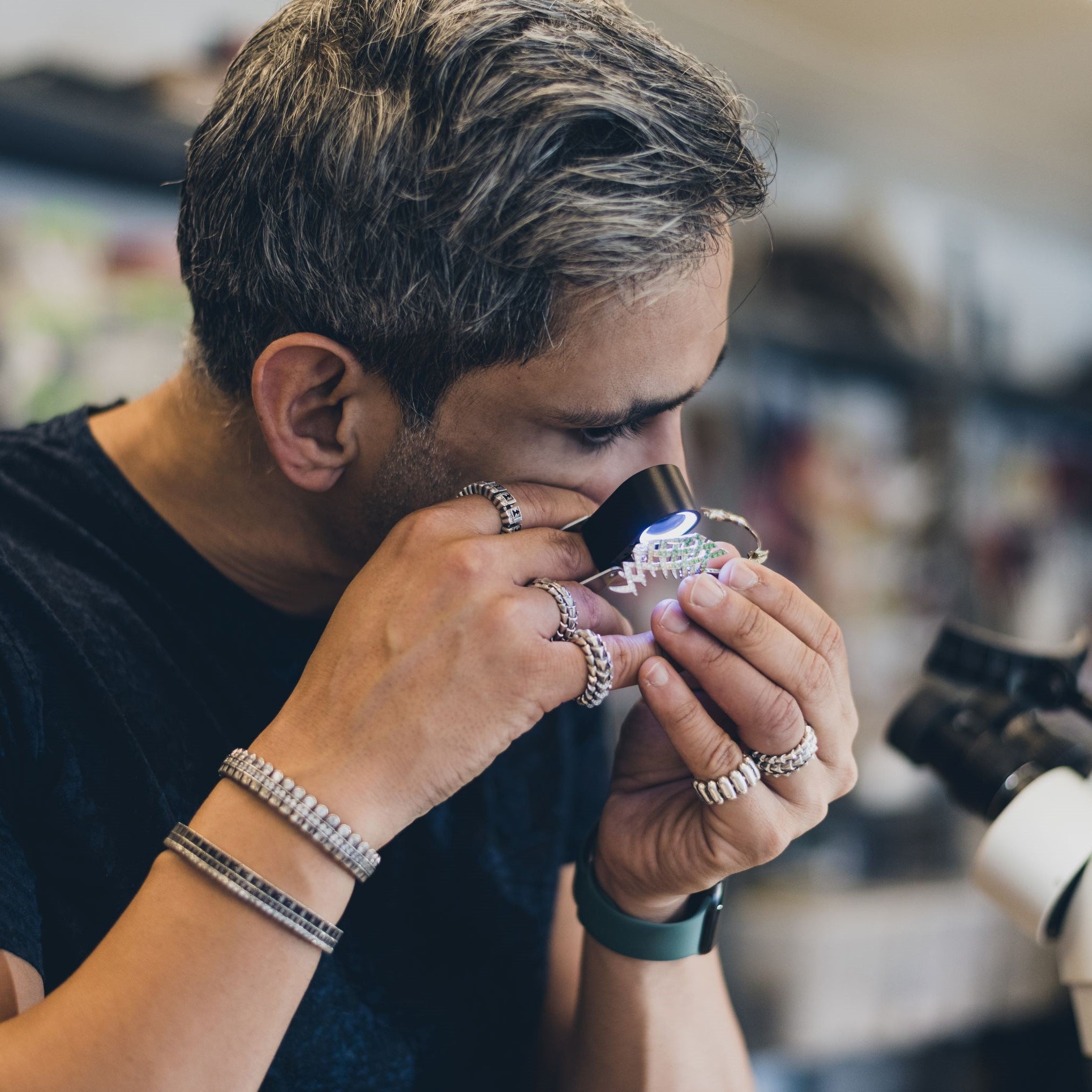
Crafting Innovation: An Engineer’s Approach to Modern Jewelry
As someone who transitioned from a career in engineering to jewelry design, I’ve always been fascinated by the concept of cross-pollination—the idea that blending diverse skills and backgrounds can lead to groundbreaking innovation. In many industries, this convergence of disciplines has already led to transformative change, but in jewelry, it has historically been missing. That's what excites me about this new chapter in my journey: the opportunity to approach an ancient craft with a completely fresh perspective.
When I started designing jewelry, my engineering mindset constantly pushed me to ask questions that traditional jewelers might not have considered. This mirrors what happened in other fields like the culinary industry. Think about it—there are countless examples of engineers entering the world of food and completely rethinking how we cook. The invention of the blender and the electric mixer weren’t born from culinary schools; they were created by people with a different way of thinking, people who saw inefficiencies and asked, “Why can’t this be easier, faster, or better?” It was that kind of thinking that led to innovations we now take for granted in our kitchens.
The same principle applies to the jewelry world. For decades, techniques and tools have been passed down through generations, with very little evolution. While tradition is incredibly important, so is innovation. When I began working in this field, I found myself questioning why certain processes hadn’t changed in centuries. Why couldn’t we develop jewelry that automatically adapts to the body, just like how technology adapts to its user? Why couldn’t we make expandable jewelry that doesn’t require manual adjustment?
The result of this mindset has been some of my most unique creations, including our AbrazoFIT™ technology—jewelry that adapts to your body’s natural fluctuations throughout the day, without you needing to do a thing. This idea came to me because I wasn't just thinking as a jeweler; I was thinking like an engineer, someone who wants to solve a problem with a tangible, functional solution.
But cross-pollination isn’t just about innovation in materials and mechanics. It’s about bringing a fresh eye to artistry as well. One of my favorite examples comes from the world of architecture. Frank Lloyd Wright, one of the most famous architects in history, once said, “Form and function should be one, joined in a spiritual union.” Wright wasn’t just building structures; he was engineering experiences. He blurred the lines between architecture and nature, creating buildings that became living, breathing parts of their environment.
This philosophy is central to how I approach jewelry design. I don’t just want my pieces to be beautiful; I want them to be experienced. Whether it’s the tactile sensation of an adjustable ring or the smooth, effortless fit of a bracelet that adapts to your wrist, my goal is always to fuse form with function in a way that feels organic and seamless. And that’s where my engineering background serves me well—it enables me to see beyond the aesthetic and into the mechanics of how things should work.
The truth is, when people from different disciplines enter a new field, they bring a sense of freedom—freedom from the way things have always been done. In my case, my engineering experience allowed me to question everything about how jewelry is made, worn, and even perceived. It led me to file multiple patents, not because I was chasing novelty, but because I saw problems that needed solving.
In this new era, I see more and more small ateliers and independent artists embracing this cross-disciplinary approach. They are not bound by tradition for tradition’s sake; they are driven by passion and a desire to create something different. This is a significant shift in the jewelry world, and I believe it’s what will define the future of the industry. It’s not about mass production or following the same patterns handed down from generation to generation. It’s about pushing the boundaries, questioning the norm, and filling the gaps that large, established brands often overlook.
So, the next time you admire a piece of jewelry, take a moment to think about the mind behind it. Was it created by someone merely following the steps laid out before them? Or was it designed by someone who came into the industry with a different set of eyes—someone who isn’t afraid to break the mold, ask the hard questions, and ultimately create something truly remarkable? The beauty of cross-pollination lies in its potential to redefine not just what we create, but how we experience the world around us.
That’s the power of an engineering mindset in the art of jewelry, and I’m excited to see where this journey will take me next.

Leave a comment
This site is protected by hCaptcha and the hCaptcha Privacy Policy and Terms of Service apply.